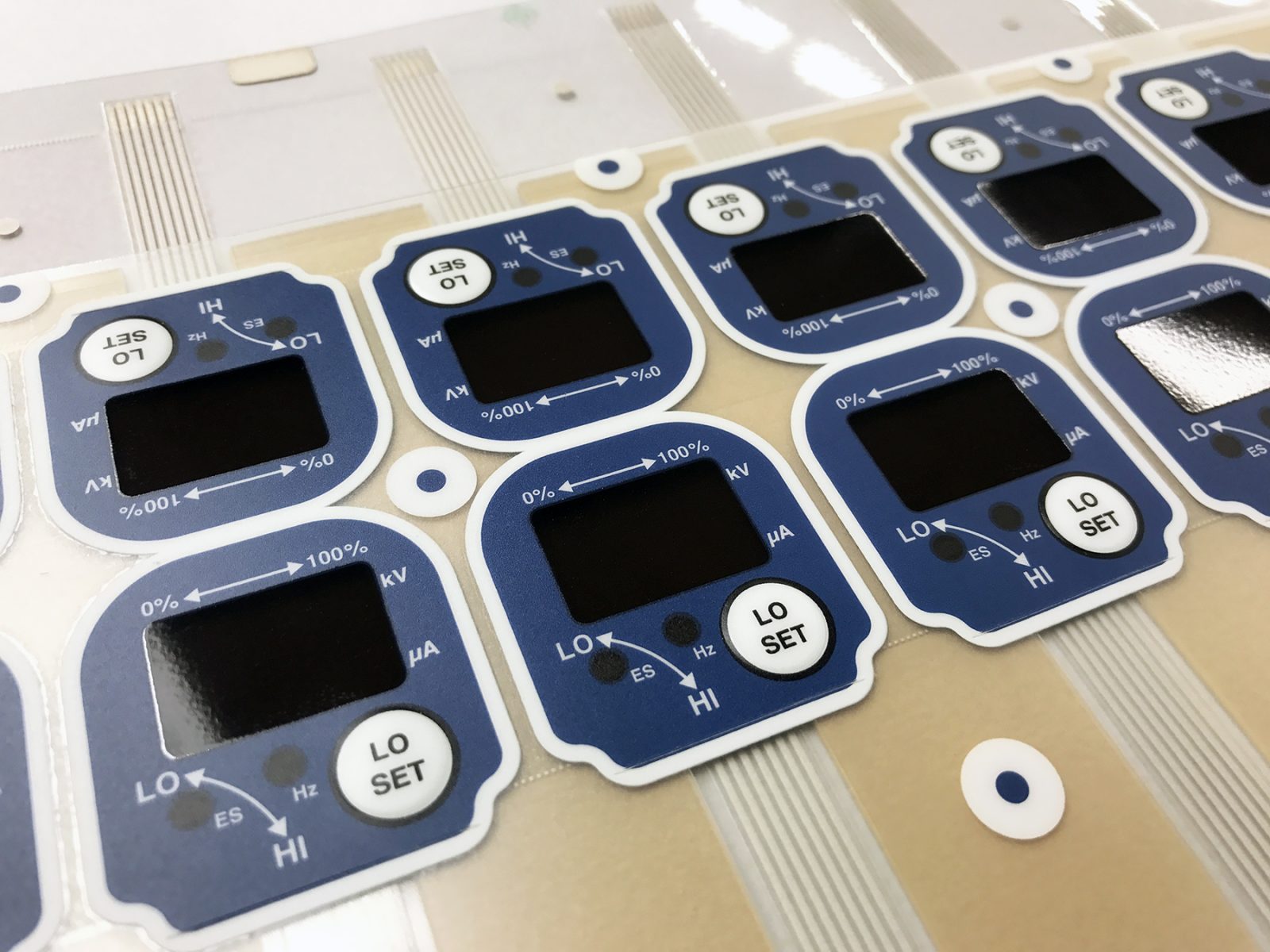Recognizing the Significance of Membrane Switches in Individual User Interfaces
Membrane switches are indispensable elements in the design of efficient individual interfaces, helping with not only capability yet likewise boosting visual allure and customer interaction. As we discover the numerous advantages and future patterns connected with Membrane technology, it becomes clear that these buttons are much more than just parts; they stand for a merging of development and usefulness.
What Are Membrane Switches?

The spacer layer, which includes glue properties, enables the splitting up of the circuit layer from the overlay, making certain that the button remains in a non-activated state up until pressed. When pressure is applied to the overlay, it compresses the spacer layer, bridging the gap and finishing the circuit in the underlying layer. This design not only minimizes the physical room required for traditional mechanical buttons yet likewise improves the toughness of the device, as Membrane buttons are typically resistant to dust, dampness, and various other ecological aspects.
Frequently found in applications ranging from customer electronic devices to clinical tools, Membrane switches are indispensable to modern-day innovation, providing a effective and straightforward user interface that straightens with modern style needs.
Advantages of Membrane Switches
While various switch modern technologies exist, Membrane Switches deal unique advantages that make them especially desirable in numerous applications. Among the main benefits of Membrane buttons is their small style, which permits for space-saving applications in gadgets where property is restricted. Their thin profile not only enhances aesthetic appeal yet also helps with lightweight building.
Another substantial advantage is their resistance to ecological variables. Membrane buttons are normally secured against moisture, dirt, and impurities, making them suitable for use sought after settings, such as medical tools and commercial tools. This resilience prolongs the life-span of the switch, decreasing upkeep costs and improving dependability.
In addition, Membrane buttons can be customized to meet particular style demands, including special graphics and shades that boost customer communication. Their responsive responses alternatives can also be tailored to provide a rewarding individual experience. In addition, Membrane buttons are cost-effective, particularly in high-volume applications, as they can be produced efficiently.
Applications in Different Industries

In the customer electronic devices sector, Membrane buttons prevail in devices such as microwaves, cleaning devices, and remote controls. Their responsive responses and visual choices enhance user experience while offering a smooth, modern appearance. Additionally, auto manufacturers make use of Membrane switches in control panel controls and infotainment systems, where area is restricted, and customer involvement is essential.
Furthermore, the commercial sector leverages Membrane buttons in control panels for equipment and equipment, permitting instinctive operation in frequently rough settings. Their resistance to chemicals and moisture ensures durability and integrity in these applications. Generally, the flexibility of Membrane Switches contributes considerably to their extensive use, making them important in different technological domain names.
Design Factors To Consider for Membrane Switches

When developing Membrane buttons, several essential factors to consider have to be taken i was reading this into consideration to guarantee ideal capability and customer experience. The choice of materials is crucial; choosing sturdy, top quality substrates can enhance the switch's longevity and resistance to environmental factors such as moisture and temperature level variations.
Second of all, the layout of the visuals overlay must prioritize clarity and ease of use. Symbols and message need to be readable, and the design ought to help with intuitive interaction (membrane switches). In addition, responsive comments is vital; integrating a tactile dome or various other devices can improve the user experience by providing physical verification of activation
One more essential factor is the button's electric performance. Developers need to make sure that the conductive traces are correctly designed to decrease resistance and prevent signal interference. This entails examining the required actuation pressure and making sure compatibility with the electronic parts they will user interface with.

Future Patterns in Membrane Innovation
As modern technology remains to advance, Membrane buttons are poised to progress considerably, driven by advancements in materials and producing strategies. One arising trend is the unification of advanced materials, such as adaptable substrates and conductive inks, which improve longevity and decrease the total weight of Membrane switches. These materials not just improve the responsive reaction but also enable the design of switches that can stand up to harsher environmental conditions.
Moreover, the assimilation of touch-sensitive technologies is transforming standard Membrane Switches right into more interactive interface. Capacitive touch sensing units embedded within Membrane switch panels can supply an extra receptive and intuitive individual experience, straightening with the expanding need for sleek, modern styles in consumer electronics.
Furthermore, improvements in printing strategies, such as electronic and 3D printing, make it possible for quick prototyping and modification of Membrane buttons. This adaptability permits manufacturers to respond faster to market demands and consumer preferences.
Lastly, sustainability is becoming a significant focus, with manufacturers exploring environmentally friendly materials and processes. As these trends unfold, the future of Membrane modern technology assures improved performance, aesthetic allure, and ecological duty, strengthening their function in sophisticated interface across various sectors.
Verdict
Finally, Membrane Switches stand for a crucial element in the design of customer interfaces, integrating performance with aesthetic adaptability. Their benefits, including resilience and resistance to environmental variables, make them appropriate for diverse applications throughout different industries. Thoughtful style considerations boost individual interaction and experience. As innovations in innovation continue, the advancement of Membrane buttons is expected to more fine-tune interface, driving advancement and improving use in a progressively complex technical landscape.
Membrane switches are essential parts in the design of reliable customer interfaces, facilitating not only capability but likewise boosting visual appeal and individual communication.Membrane Bonuses Switches serve as an important part in numerous individual interfaces, promoting a seamless interaction between individuals and digital tools.While numerous switch innovations exist, Membrane Switches deal distinctive benefits that make them particularly desirable in various applications.Additionally, Membrane buttons can be tailored to fulfill specific design requirements, incorporating distinct graphics and colors that improve individual communication.In final thought, Membrane Switches represent a crucial element in the design of user interfaces, combining functionality with aesthetic flexibility.
 Danny Tamberelli Then & Now!
Danny Tamberelli Then & Now! Alfonso Ribeiro Then & Now!
Alfonso Ribeiro Then & Now! Barret Oliver Then & Now!
Barret Oliver Then & Now! Ben Savage Then & Now!
Ben Savage Then & Now! Alexa Vega Then & Now!
Alexa Vega Then & Now!